PROS
Similar to the pedals used by professional guitarists in the past, the Turbo is perfect for playing classic rock. It has a built-in feature that lets you use it with a foot pedal.
BEST DISTORTION
PEDAL 2019
BOTTOM LINE
You can get all the tones that you want with this pedal, which works with both guitars and keyboards. Boss provides you with a number of accessories that will work with the cable too.
PROS
Designed for musicians of all types, this affordable pedal provides effects that are suitable for both soft jazz and hard rock. The bundle comes with guitar picks and other accessories such as a 10-foot long pro cable.
CONS
You may need to adjust the settings multiple times to get the effect that you want. Some shoppers wanted the battery to last longer.
BOTTOM LINE
Best for serious and professional musicians, this distortion pedal gives you total control over the sounds that you produce. It allows you to play clearer and grittier notes.
PROS
The classic and basic design of this distortion pedal appeals to those who play rock music. It features five knobs for making your adjustments and offers a true bypass option.
CONS
This pedal is much louder than others and may require that you turn down the volume. Some shoppers felt it produced a muddy or cheap sound.
BOTTOM LINE
Electro-Harmonix designed this model to feature big sounds in a small package. The pedal features a durable enclosure and a sustain knob that will maintain your favorite settings.
PROS
The rugged enclosure used on this model will last for years when used at any type of show or performance. It works with the included battery or with an optional power adapter.
CONS
This pedal may produce some hissing or other noises when connected to your amp. A few shoppers had problems when changing the battery too.
BOTTOM LINE
The FATRAT offers all the amazing sounds that you want and has a simple box design that lets you stack it on top of other objects. This pedal will work with a number of different chips too.
PROS
With a stackable design, the FATRAT will sit right on top of your amp or directly on the floor. It will work with different amps and different types of power sources for use anywhere.
CONS
Some customers noted that the quality of newer pedals doesn’t match the quality of older ones. A few players wished that the battery wires didn’t take up so much space.
BOTTOM LINE
For classic rock, few pedals can compare to the DS-2 Turbo from Boss. While priced around the same as the DS-1, this model has a turbo feature and will work with foot pedals.
PROS
Similar to the pedals used by professional guitarists in the past, the Turbo is perfect for playing classic rock. It has a built-in feature that lets you use it with a foot pedal.
CONS
A few shoppers found that this pedal sounded worse than other effects pedals did. We also saw customers who wished that it had a slightly cleaner sound.
When you buy your first electric guitar and sit down to play, you might find yourself disappointed with the notes produced. This can happen because the guitar doesn’t produce the wailing sounds that you wanted to make. The best distortion pedal for 2018 can completely change the way you play and the notes that you produce. Some of the top guitar players of all time used these pedals both on stage and when working in the recording studio. You can easily find the top distortion pedal of 2018 that will help you sound like a pro whenever you play.
Also called a distortion effect pedal, this type of device easily attaches to your guitar in the same way an amp does. You can adjust the verb and other features to get the gritty sound that you want and to add an edge to your music. Our team searched dozens of websites and consulted with a number of experts to find the best of the best. In addition to giving you information on the top pedals and detailed product reviews, we also created an advanced shopping guide that any musician can use. Our shopping guide will help you find a distortion pedal that works with any type of instrument.

Follow us on:
Get exclusive content, advice and tips from Honest Product Reviews delivered to your inbox!
Musicians looking for new pedals typically go with the most expensive or the cheapest. Those who opt for the cheapest models are usually musicians who have less money and those who play for fun rather than profit. Musicians who buy the most expensive pedals often include those who play professionally and get money for their work. Some shoppers make purchases without looking at anything beyond price and buy pedals that don’t work for them.
Once we decided to make a shopping guide for distortion pedals, we set to work finding the top five products and the best features for our readers. We spent hours scouring the web and consulting with real musicians to find out why they bought distortion pedals and what they thought about when buying those items.
After creating a list that included dozens of pedals, we examined each one up close to find the best five options. We used Amazon to ensure that our readers could easily buy those pedals online and looked at the reviews posted by shoppers on that site. You can read descriptions of each of the top five pedals and check out our shopping guide before using our links to purchase the best one.
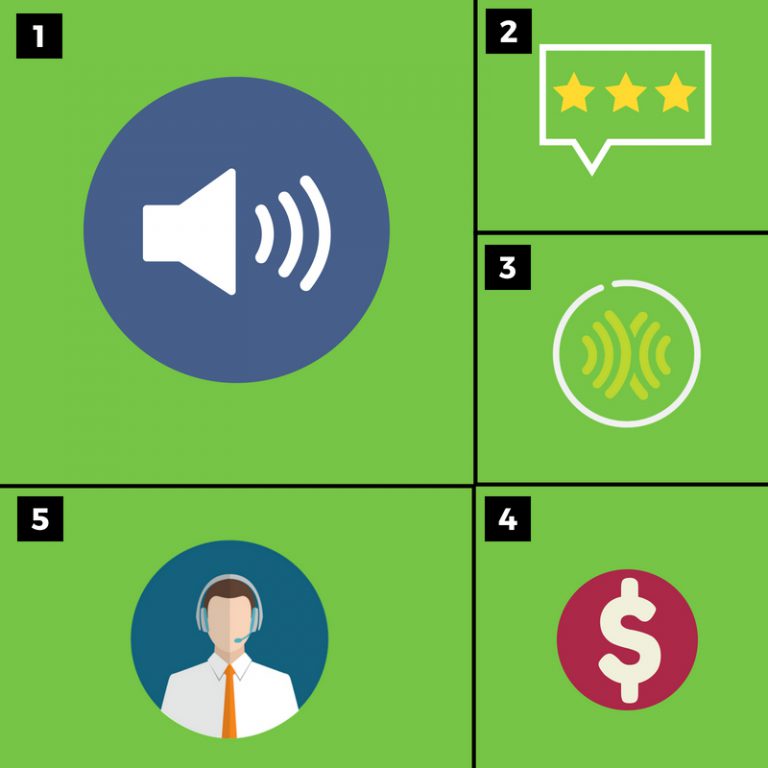
It’s really important that you know what a distortion pedal does before you buy. You may find that you prefer working with another type such as a fuzz pedal. A distortion pedal essentially distorts the notes that you play. Instead of providing crisp and clear sounds, it gives those notes a fuzzier tone that helps you create blues music that any musician would love.
If you ever used an amp before, you know that certain notes can lack the power that you want. The amp can make some notes sound clearer and make other notes sound fairly wimpy or rough. Depending on how loudly you play, you can even damage the amp. When you use a distortion pedal with your amp, you get all the notes and tones that you desire.
Fuzz pedals produce even more distortion and can make it hard for you to hear the different notes that you produce. Distortion pedals do a good job of changing the notes and making each one sound rougher while also ensuring that you can hear every single one. Even if you just like jamming with friends or playing songs with your family, you’ll find a few different ways to use a distortion pedal.
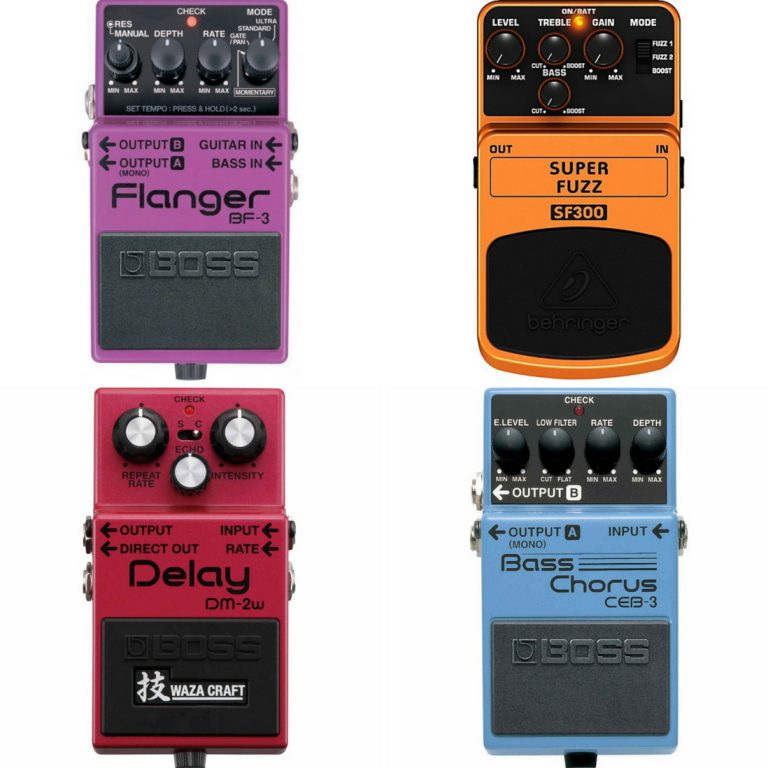
When you decide to buy a distortion pedal, you might focus on the price or the way it looks without thinking about how you will actually use it. Knowing how you will use that pedal is important because this can give you an idea of which power source you should choose. You can typically use an independent battery source that relies on an AC adapter or a 9V battery.
Some players prefer using a standard battery because they think it is more convenient. When you play on stage or in front of a group of people, you can connect the battery to the pedal in a few minutes or less and move around the stage without tripping over any cables. The main problem with these batteries is that you have no way of knowing when it will run out of power. This can result in you standing in the middle of a stage with a pedal that won’t work.
AC adapters let you play for hours without running out of juice. As long as you have access to an outlet, you can use your pedal. We recommend looking for distortion pedals that are compatible with both 9V batteries and AC adapters. Even if you need to purchase the adapter separately, you’ll have one on hand for your upcoming gigs.
Most AC adapters designed for use with musical pedals are compatible with all types. If you buy one for your distortion pedal, it will also work with a fuzz or an overdrive pedal. You can get the adapter by itself for as little as $20. You may need to spend a little extra on a cable that runs from the pedal to the adapter though.
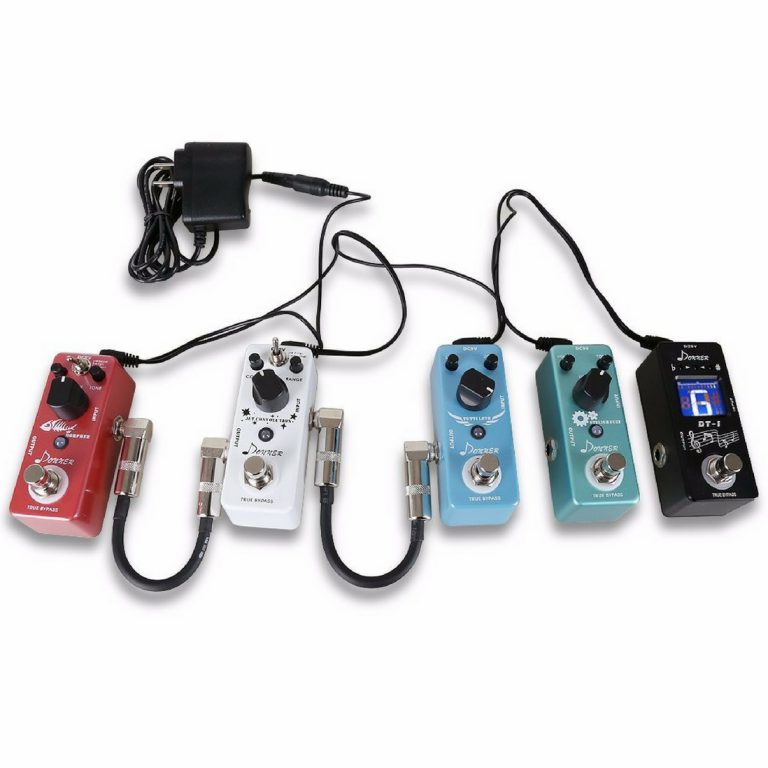
One benefit to using a distortion pedal is that you can change the amount of distortion as you move from rougher or harder songs to softer tracks. Depending on how much experience you have though, you may find that you prefer a model that comes with some presets. These pedals, which usually have a digital design, come with settings already established. This means that you can plug in your guitar or keyboard and start playing almost right away. You can switch between those settings as you switch between songs or play different types of music.
Those presets also allow you to make some adjustments of your own. Let’s say that you like the way the pedal makes your guitar sounds but that you wish there are a little more treble and a little less bass. After making those adjustments, you can then save those changes on the pedal. If you want to use the same settings later, you can hit a button and immediately access the preset that you customized.
The only real issue with preset pedals is that you may want to do more customizing. Most of these pedals only give you a limited number of options. If you want to play like Hendrix or another superstar, you’ll want a base pedal that doesn’t feature presets.

Do you remember those days when you invited friends over to play a few video games? You probably also remember turning the television to a different channel or using rabbit ears to improve the signal that came across the screen. Those who remember the good old days often prefer distortion pedals with an analog design. Analog pedals provide you with a clear sound that some refer to as a purer sound. You can use one to get the natural notes that you want when jamming with friends or playing a hard rock tune. Old school and traditionalists usually prefer these models, but some guitarists much prefer digital models.
Digital models work with the entire spectrum and can provide a more modern quality that you won’t get with an analog pedal. Some players also like digital pedals because they can use them with different instruments and because the pedal can produce different effects. You might get one that functions as both a distortion and a fuzz pedal. The main problem with digital models is that they can produce a tone that sounds artificial or fake. If you want to enjoy the pure sound of music, you may want an analog model.
Pros:
Cons:
When you connect an instrument to a pedal, any music that you play will go through that pedal. You can use the illustrations below to see how this works. With a traditional system, the signal moves from your guitar to your pedal. The pedal will distort and charge the signal before sending it through to your amp. This results in music that sounds muddy or watered down. The signal can degrade so much that you have a hard time hearing the notes or playing a specific song too. One way to avoid this problem is with a pedal that features a true bypass system.
With a true bypass system, the pedal will still feature the same internal parts but will not send the signal over or through those parts. When you play a note, it moves directly from your instrument through the pedal and across to your amp. Some models have a button that allows you to turn the bypass feature on and off. You can leave it off when practicing and rehearsing for an upcoming show and turn it back on before you play live. Pedals with a true bypass feature provide clearer and purer sounds without any feedback or static.
All distortion pedals on the market feature a series of knobs. You will need to turn the knob in a clockwise direction to turn on a feature and in a counter-clockwise direction to turn off the feature. When choosing a distortion pedal, there are a few things you should look at in regards to those knobs.
A small number of distortion pedals feature an output knob located right next to the output itself. As you turn the knob, you’ll change the way the signal moves through the pedal. This can increase the volume and the clarity of that signal.
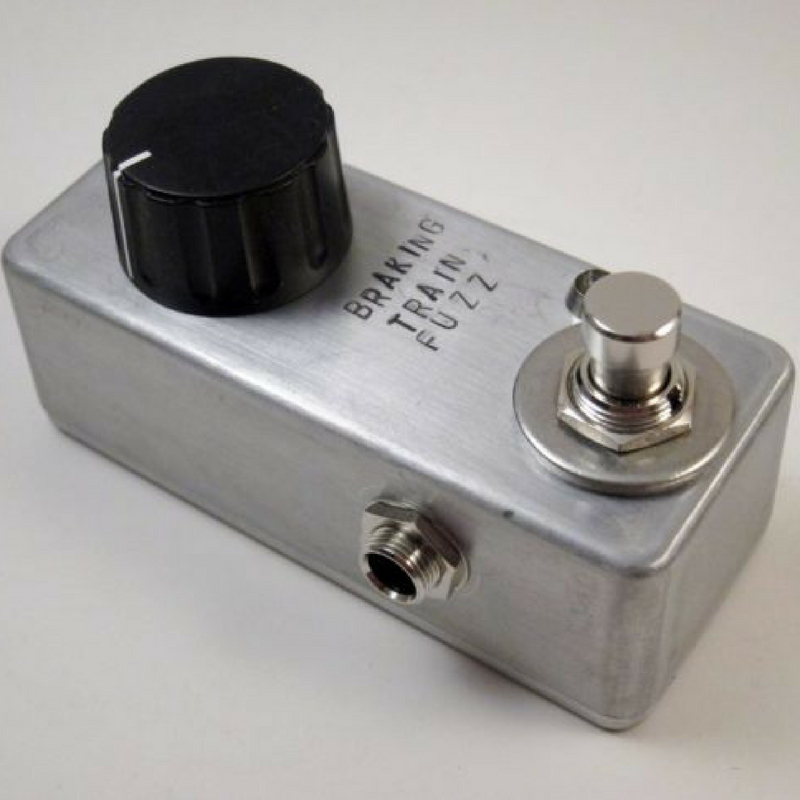
Though we already talked about what a distortion pedal is and what it does, you may want to know how this type of pedal works too. The basic concept is fairly simple. When you connect the pedal to an amp and your guitar or another musical instrument, you use cables that allow signals to move from one area to another. The signal moves from the instrument to the pedal and then to the amp, which increases the volume and bass of those notes. When you use just an amp, the full signal moves from the instrument to the amp and then to your ear. With a distortion pedal, those signals change before they reach your ear.
The pedal has components inside that actually clip the signal. This process removes a portion from both the top of the sound wave and the bottom of that wave. The signals and notes that you hear have a softened quality that can be quite nice. Though distortion first appeared in music produced during the 1950s, it wasn’t until the 1960s that distortion pedals first landed on the market. Modern designs still use some of the same features found on those early pedals.
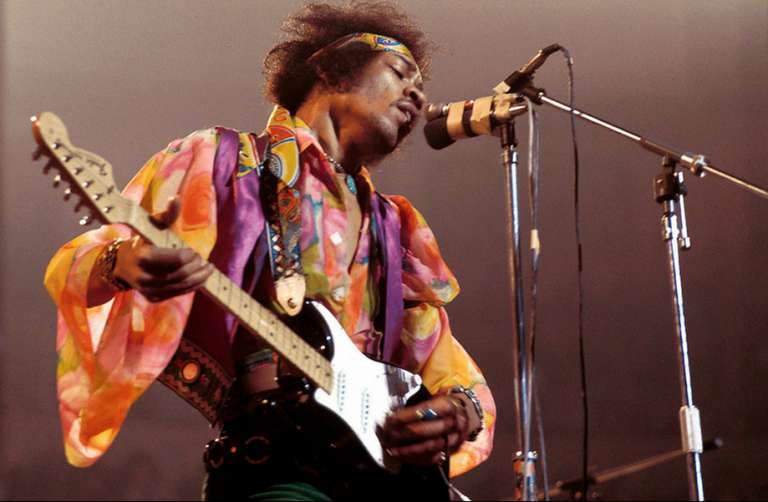
Many credit Jimi Hendrix with introducing the world to music produced with distortion pedals. The Kinks also used these pedals in some of their songs.
Clipping is a term that refers to changes made to the signal as it moves through the pedal. This process actually briefly pauses the signal before sending it through to your amp, which creates the bolder and richer tones that you want. It’s important that you know whether the pedal does any clipping because this will tell you more about the sounds that you can produce.
When it comes to distortion pedals, clipping actually distorts the notes as you play at a lower volume. Whether you like hard rock or jazz, you can turn down the volume on the pedal and your amp and still get the crisp but slightly rough notes that you need. If you buy an overdrive pedal, the clipping will require that you turn up the volume on those devices. As you turn the volume up, the pedal will produce even more distortion and create music that sounds almost angry.
We highly recommend that you look at what the manufacturer states about the clipping used by a pedal. You want to make sure that this process will produce richer and more vibrant sounds without requiring that you turn the amp up so loudly that it might blow.
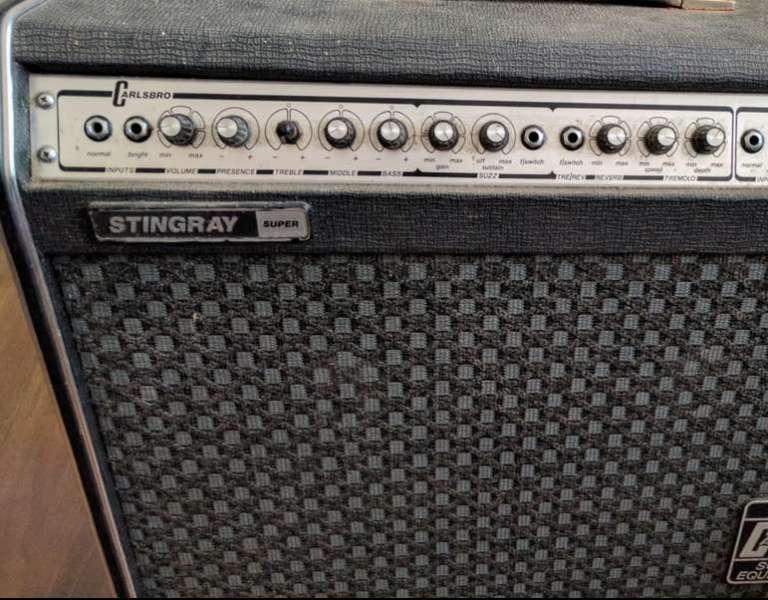
Manufacturers use the terms case and enclosure to describe the exterior of their distortion pedals. This case is what protects the internal parts and ensures that the knobs work with the pedal’s settings. Some of the things you should look at in terms of this case include:
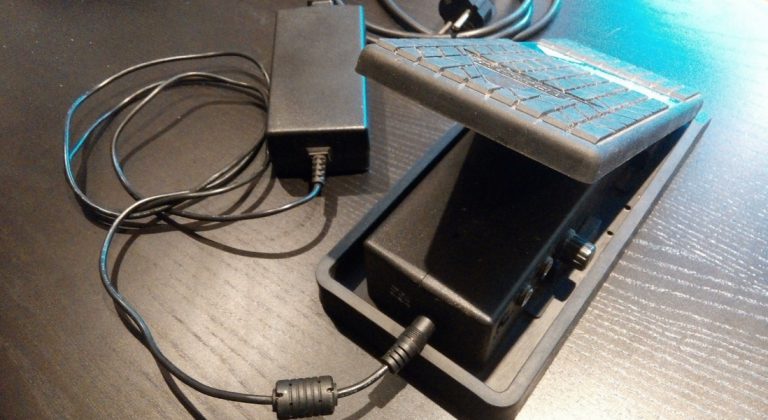
One important thing you should consider when picking a distortion pedal is whether that pedal will work with your favorite genres of music. Even if you claim that you love all music equally, you’ll have a few genres that you prefer. You might love the pounding bass lines and screeching vocals associated with hard rock and heavy metal or the dulcet and soothing tones of classical music. Distortion pedals are really best for louder forms of music such as hard rock. Disturbed and Metallica are a few examples of bands that produce hard rock. You can also use a distortion pedal when playing your favorite classic rock songs such as a few hits from The Rolling Stones.
When shopping online, you cannot try out the pedals the way you can in a neighborhood music store. You’ll need to depend more on the information from the manufacturer and the reviews that customers wrote. As you look at product reviews and descriptions, make sure that you look for those that highlight the specific type of music that you play. Though distortion pedals work with all types of hard and loud music, you’ll likely find some that produce more distortion than others.
Even if you need to save money, never buy an effects pedal that uses a plastic housing or case. That case can break when you travel to a live show or when you use it at home.
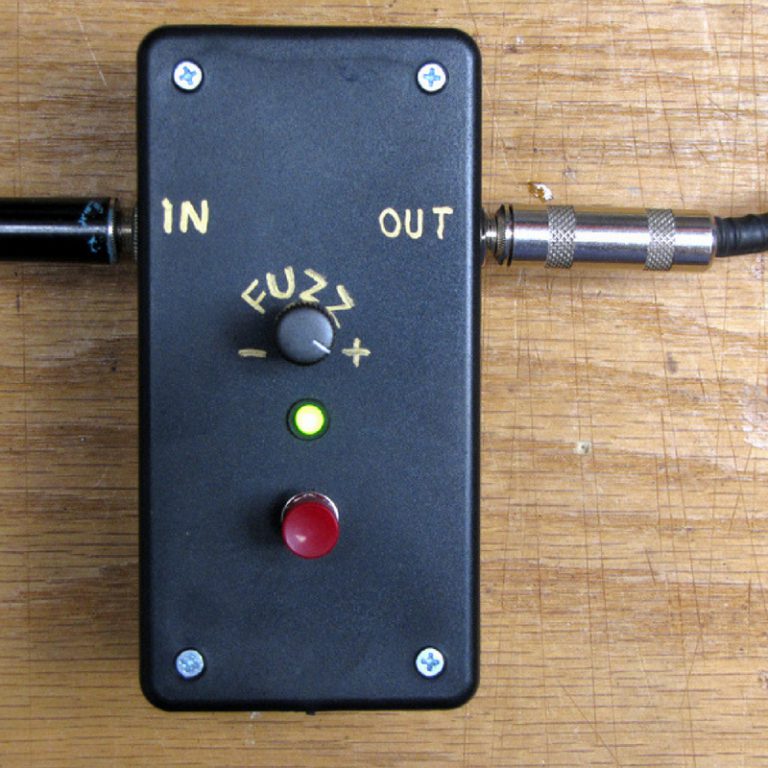
An important thing to keep in mind when looking at distortion pedals is the level of distortion produced. Most of the products that we saw and those that are on our list are standard distortion pedals. You’ll also find models called fuzz and overdrive pedals. We briefly discussed how overdrive and distortion pedals compare in a previous section. Overdrive pedals typically provide more drive and have a higher distortion level. You can also use these pedals at a range of volumes and still get some good sounds. Fuzz pedals produce a lower type of distortion that can make songs sound slightly fuzzy.
The distortion level of each pedal can also vary based on its price. High-end models will cost more but have a higher maximum level and a larger range. You can twist a knob on the pedal to get more or less distortion as you play. Cheaper models typically have a smaller range and may not produce as much distortion as you desire. Those in the mid-range are good for both amateurs and professional players because they have a good range and a nice level of distortion. You can use those pedals to produce both fuzzy sounds and to get even more distortion.
Before buying a new distortion pedal, consider doing a search for that pedal on YouTube. Not only can you watch video reviews of that pedal, but you can also see people playing music with it. Those videos let you see how it performs before you spend any of your money.
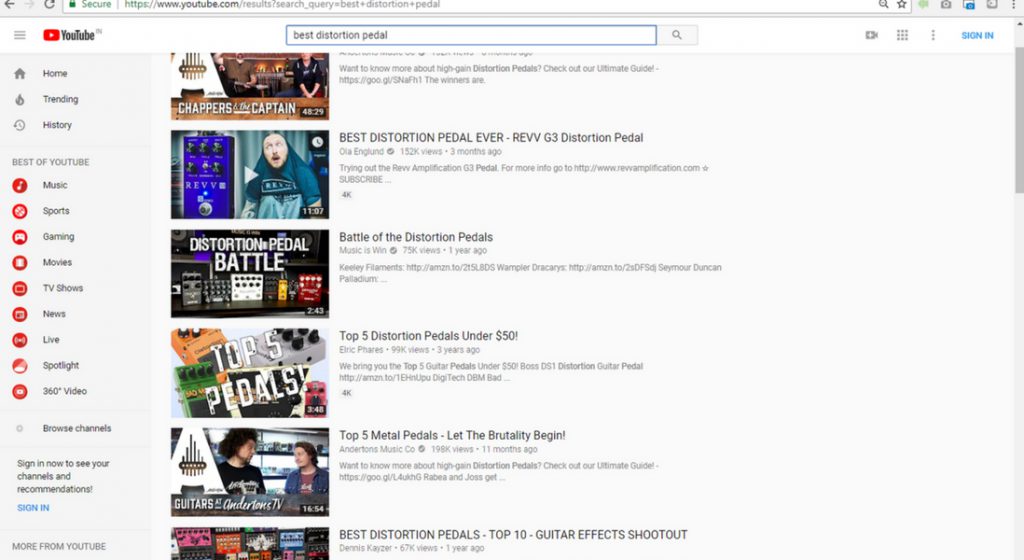
A number of famous musicians learned how to play musical instruments while blind or learned how to keep playing after losing their sight. Though you might think it’s impossible to play your own guitar at the same time that you keep your head and eyes up, the right distortion pedal will make this possible. You have the option of choosing one with a simple and basic design or one that has a number of more features and knobs. If you play live and want to keep your eyes on the crowd, you should choose one with a more basic design. You can reach down to flip a switch or adjust a feature while still paying attention to those watching you.
Distortion pedals with a more complex design are best for those with more experience and those working in a recording studio. You can set up all the features and adjust the bass and treble as well as the distortion level before you begin playing. The design can include features such as the number of buttons located on the top of the pedal and both the location of the input and the output and their proximity to each other. Expert musicians sometimes prefer using one pedal when rehearsing and a different pedal when performing live.
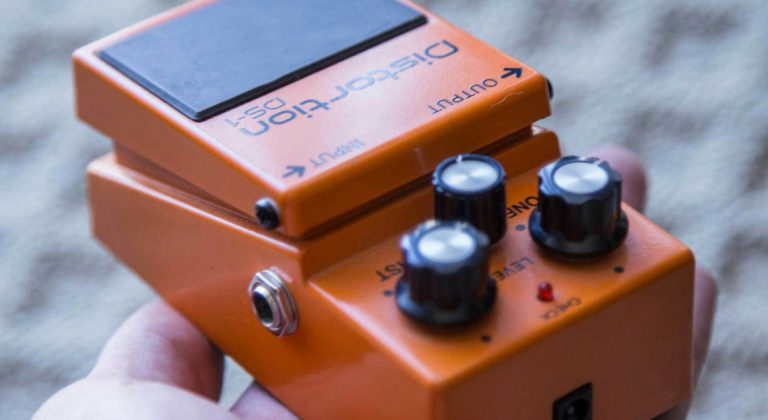
Two important terms that you should know and understand are tone and gain. Gain refers to the intensity of each note produced. Musicians like using distortion pedals because these products make their songs sound grittier and dirtier. Those with a higher gain will produce notes that sound grittier than you ever expected. The gain of a pedal can relate to the type of music it works best with too. If you buy one designed for blues music, you can expect the pedal to have more gain. This is because blues music is much deeper and soulful. Pedals designed for use with hard rock or heavy metal may have less gain.
You also need to consider the tone and how the pedal lets you change and manipulate notes. Let’s say that you want to play low bass notes when recording a blues song. You can adjust the settings to produce rich and full bass notes that still have some reverb and distortion. When you switch to another genre, you can make a few adjustments and jump right back into things. You’ll want to make sure that the pedal allows you to reach all the tones that and notes that you like playing.
Before buying and hooking up a distortion pedal, make sure that it will work with your amp. You should check the gain on the amp and compare it to the gain on the pedal.
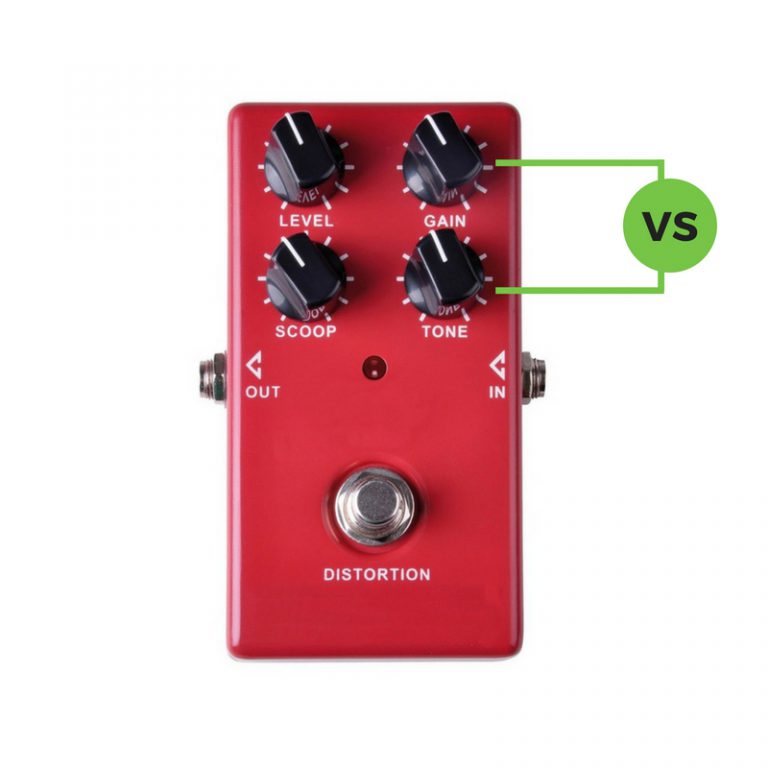
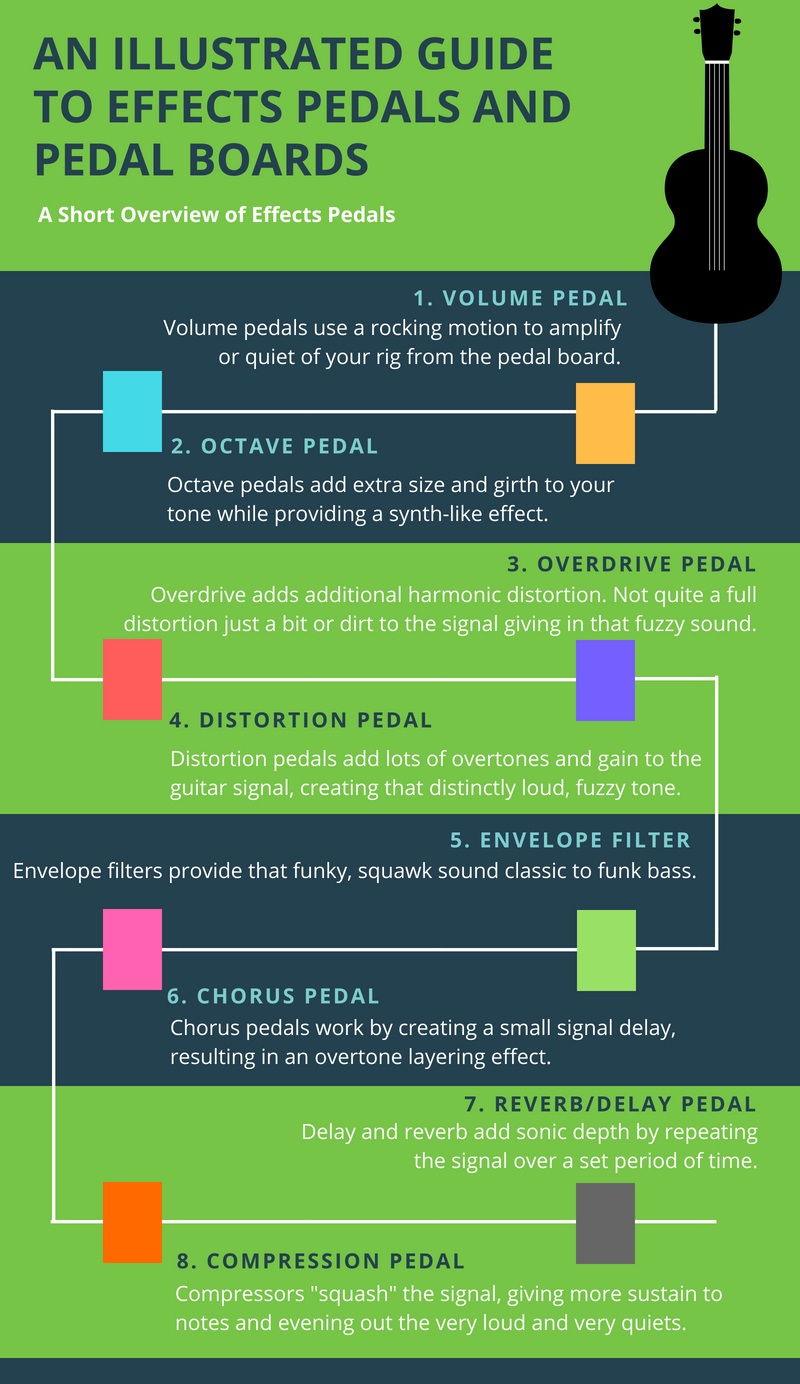
While you can purchase effects pedals from local shops, you can find even more pedals available online. Some of the benefits of purchasing your next distortion pedal online include:
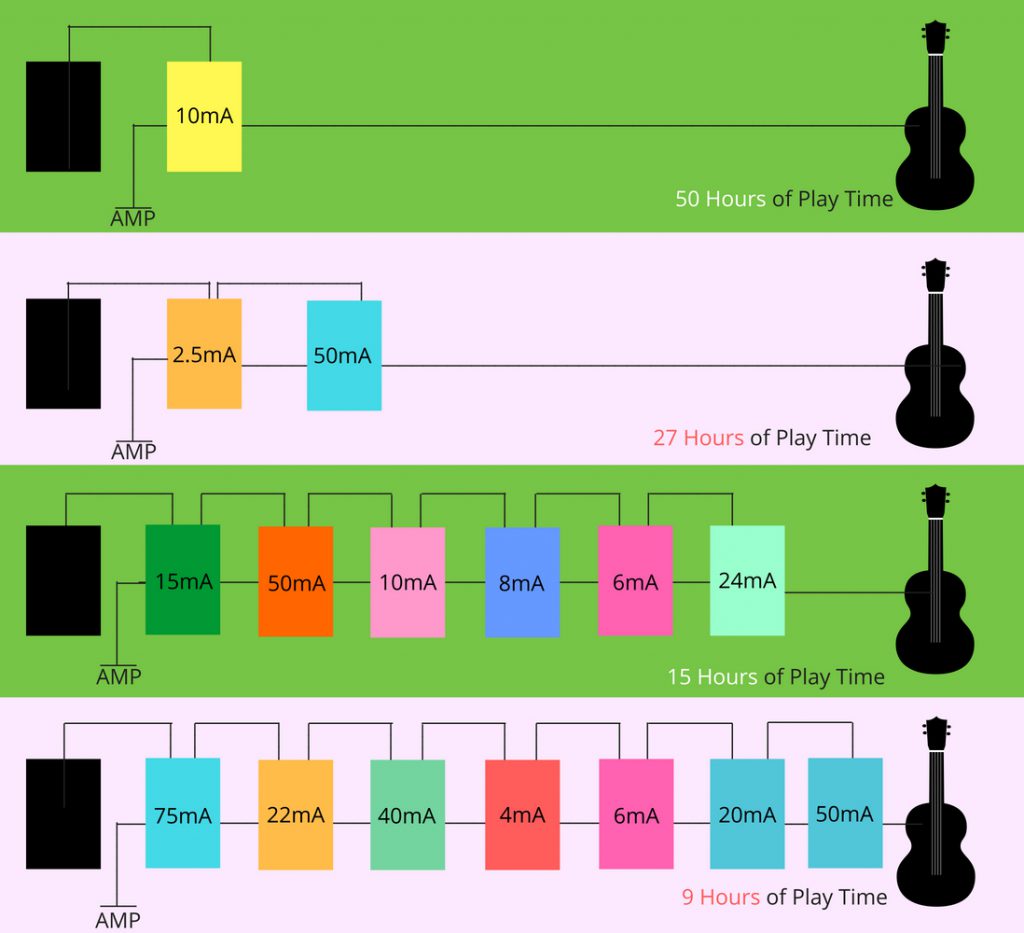
One of the best ways to learn more about the distortion pedals that you have an interest in is with a look at some of the customer reviews that you see online. We put a lot of weight on those reviews when deciding which of the top products to include on our list of the best distortion pedals for 2018. Not only did we factor in the average star rating of each pedal but also the percentage of negative reviews to the percentage of positive reviews on each product. You should look at both our reviews and product descriptions as well as online reviews.
The most important thing to look at is the longer reviews that you might see. Anyone can go online and assign a star rating to a product and write a single sentence. It takes more time to sit down and write a paragraph or more. When you focus on those longer reviews, you’ll find the best pedals that both amateurs and pros love. You should also look at reviews that mention your favorite genre of music and the music that you play. The best distortion pedal for you will work with that genre and provide all the features that you love.
Though Amazon and other sites made it harder for people to write fake reviews, you may still come across some of these reviews when shopping for a distortion pedal. It’s important that you know which of those reviews are fake. Fake reviews can come from companies themselves as well as competing companies. Some of the top signs that a review is a fake include:
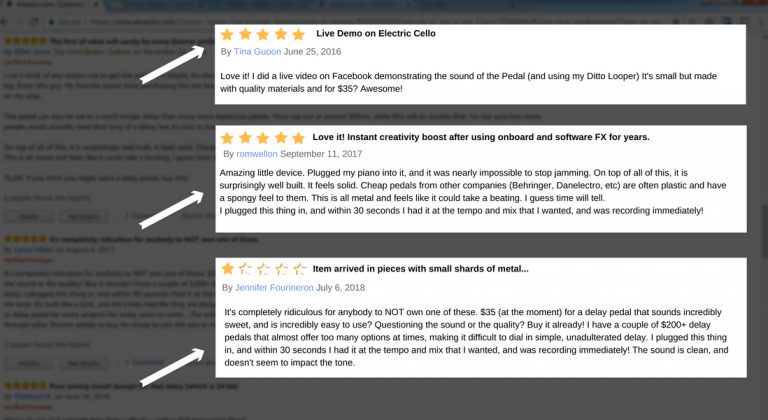
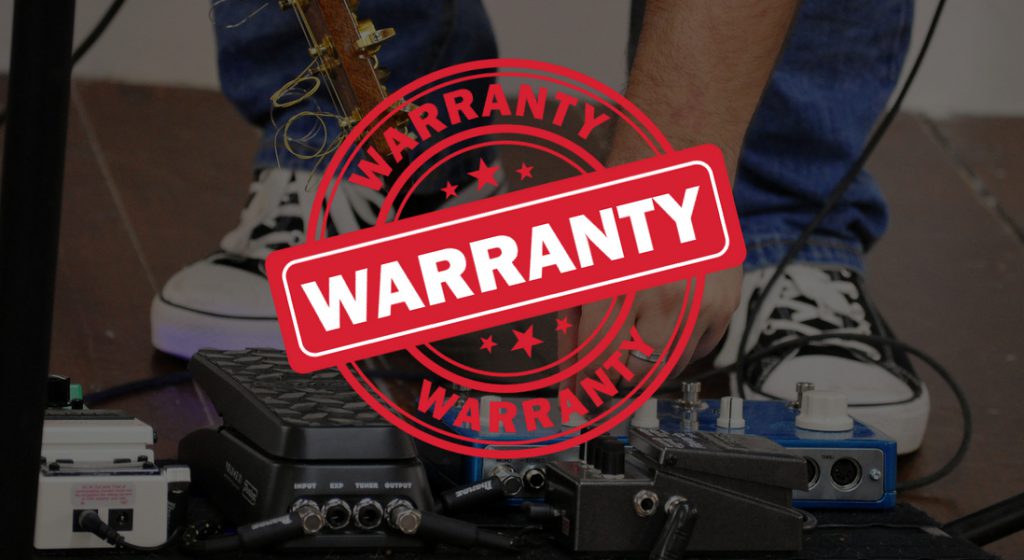
You can visit a neighborhood shop and try out a distortion pedal before buying the same pedal online. If you don’t want to waste time, you can also order a pedal that comes with a good warranty. If the pedal doesn’t fit all your needs, you can return the pedal for a full refund. Some sellers and manufacturers will charge a restock fee or require that you pay for the return shipping.
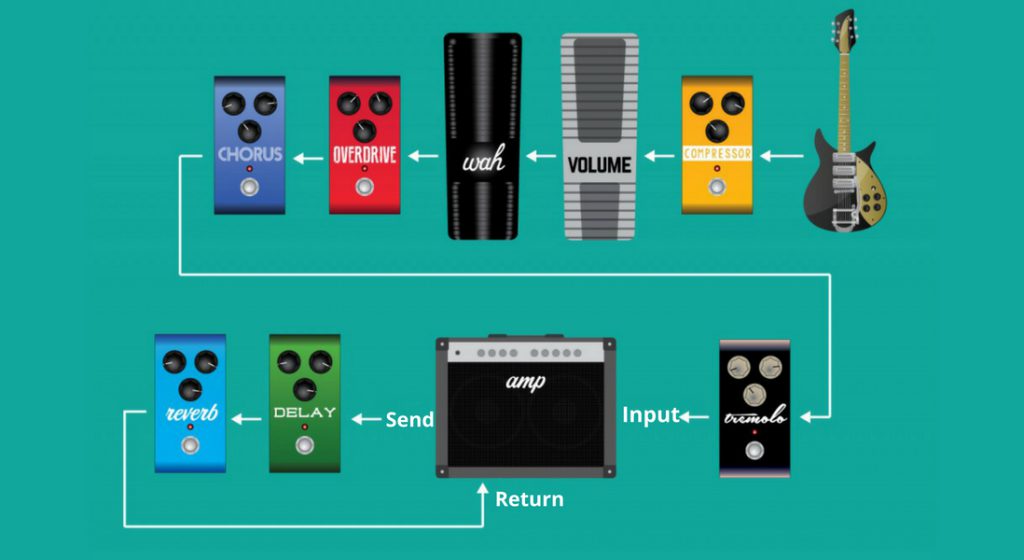
It costs more to purchase a fluid dynamic or a double ball bearing fan. You’ll also spend more to maintain that fan and replace it in the future.
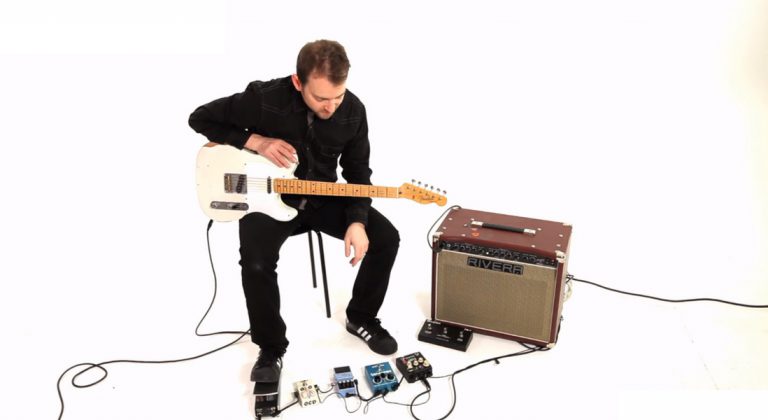
The best way to see how much a pair of bass headphones will cost is with a look at the product’s Amazon product page. We included links to those pages for each of the top five pairs on our list. You can also use the chart below to see which products are more expensive than others.
When it comes to cost, the most expensive pairs are those designed for the pros. The JVC headphones retail for more than $600. While this might seem expensive to you, the cost is actually less than what other pro models cost.
If you really want to save money, you might go for a pair of earphones instead of headphones. Bass earphones are smaller in size and have tiny pads that you actually place inside your ears. Those pads send the bass notes directly into your ear canals. You can get a pair of bass earphones for as little as $10 or $20.
Traditional bass headphones have an on-ear or an over-ear design that forms a seal to keep those notes inside your ears. Most of these headphones retail for around $50 to $100. You will find other models that cost much more though, including pairs in the $200 or $500 range.
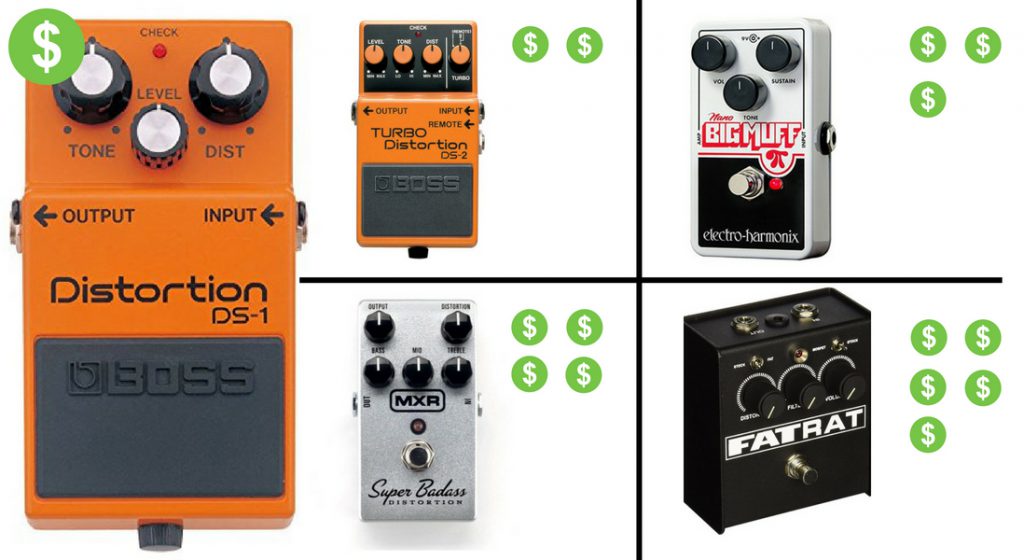
A: Some manufacturers now make effects pedals that work with an app you can download to your phone. Though many of these products are only compatible with Apple devices, some will work with Android products too. Once you download that app and sync it to your pedal, you can use the app to turn the pedal on and off and to change the settings.
A: Though you may come across some pedals that claim to work as both distortion and overdrive products, the two terms actually refer to different things. Overdrive is much more powerful than distortion and does not distort or changes the tones as much. You’ll generally want to choose between either a distortion or an overdrive pedal. Those that claim to do both will usually do one or the other better.
A: You should pay attention when reading product descriptions to make sure that the pedal comes with everything that you need. Guitarists need a minimum of two cords or cables. You’ll use one to connect your guitar to the pedal and one to connect the pedal to an amp. Some companies sell pedals that do not come with any cables or just one cord.
We have access to thousands of products, and have meticulously and personally hand selected the very best for you to check out.




We are a participant in the Amazon Services LLC Associates Program, an affiliate advertising program designed to provide a means for us to earn fees by linking to Amazon.com and affiliated sites.